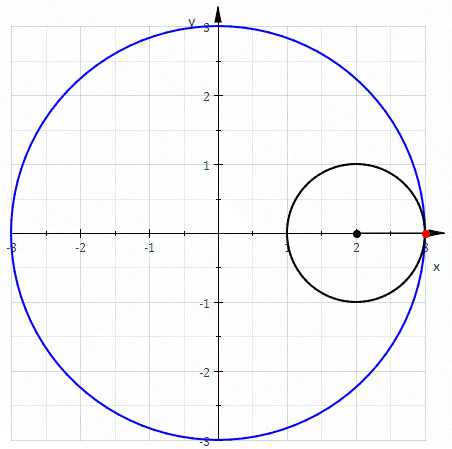Using analytical geometry, derive the expression for the perimeter of a deltoid curve (red colored).

A deltoid can be represented (up to rotation and translation) by the following parametric equations \[x=(b-a)\cos (t) + a \cos \bigg(\frac{b-a}{a} t\bigg)\] \[y=(b-a)\sin (t) - a \sin \bigg(\frac{b-a}{a} t\bigg)\] where \(a\) is the radius of the rolling circle, \(b\) is the radius of the circle within which the aforementioned circle is rolling.
Using analytical geometry, derive the expression for perimeter of the deltoid curve (red colored portion in the figure). It's 16. How?
No vote yet
1 vote
Easy Math Editor
This discussion board is a place to discuss our Daily Challenges and the math and science related to those challenges. Explanations are more than just a solution — they should explain the steps and thinking strategies that you used to obtain the solution. Comments should further the discussion of math and science.
When posting on Brilliant:
*italics*or_italics_**bold**or__bold__paragraph 1
paragraph 2
[example link](https://brilliant.org)> This is a quote# I indented these lines # 4 spaces, and now they show # up as a code block. print "hello world"\(...\)or\[...\]to ensure proper formatting.2 \times 32^{34}a_{i-1}\frac{2}{3}\sqrt{2}\sum_{i=1}^3\sin \theta\boxed{123}Comments
Ummmm, this is just a simple application of calculating arc-length of a function when it is given parametrically.......
Here............see this wiki page
Log in to reply
As mentioned in the question, I specifically wanted an answer using analytical geometry. The calculus based solution is not the one I am looking for.